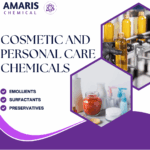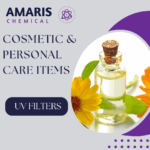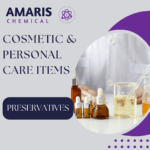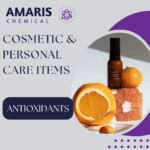
Cooling Mint Floral fragrance
$17,000.00 Original price was: $17,000.00.$15,500.00Current price is: $15,500.00.

Dextrose monohydrate 500gms
$2,300.00 Original price was: $2,300.00.$2,200.00Current price is: $2,200.00.
Sodium acetate anhydrous 99% 500gms
$2,500.00 Original price was: $2,500.00.$2,300.00Current price is: $2,300.00.
Whatsapp Order
Sodium acetate, with the chemical formula CH3COONaCH3COONa, is a versatile compound commonly used in laboratories for various applications.
SKU:
ACS73742CHEM0
Category: Analytical Reagents
Description
uses of Sodium acetate
- Buffer Solutions:
- pH Stabilization: Sodium acetate is a key component in buffer solutions, especially acetate buffers, which are used to maintain a stable pH in biochemical and chemical experiments. These buffers are particularly effective in the pH range of 3.6 to 5.6.
- Applications: Commonly used in enzyme reactions, cell culture media, and other biological assays requiring a specific pH environment.
- Precipitation of Nucleic Acids:
- DNA/RNA Isolation: Sodium acetate is used in the precipitation of DNA and RNA from aqueous solutions. By adding sodium acetate and alcohol (ethanol or isopropanol), nucleic acids can be precipitated and separated from the solution, facilitating their purification and concentration.
- Procedure: After adding sodium acetate and alcohol to the nucleic acid solution, the mixture is often cooled, centrifuged, and the precipitated nucleic acids are collected.
- Chemical Synthesis:
- Source of Acetate Ions: Sodium acetate provides acetate ions for various organic synthesis reactions.
- Applications: Used in the synthesis of esters, acetylation reactions, and as a catalyst in certain organic transformations.
- Heat Packs:
- Exothermic Crystallization: Sodium acetate is used in reusable heat packs. A supersaturated solution of sodium acetate releases heat upon crystallization, which can be triggered by flexing a metal disc within the pack.
- Mechanism: The solution remains liquid until the disc is clicked, initiating crystallization and an exothermic reaction that releases heat.
- pH Adjustment:
- Solution Preparation: Sodium acetate is used to adjust the pH of various solutions in chemical and biological protocols.
- Control: It is often added to acidic or basic solutions to achieve a desired pH level.
- Electrophoresis:
- Buffer Preparation: In electrophoresis, sodium acetate can be used to prepare running buffers, particularly for RNA electrophoresis.
- Function: Helps maintain the ionic strength and pH of the buffer system during the separation process.
- Titration:
- Analytical Reagent: Sodium acetate is employed as a reagent in titration methods, such as complexometric titrations involving EDTA.
- Role: Acts as a buffering agent to maintain a stable pH during the titration process.
- Food Preservation (Industrial Use):
- Preservative: Although not strictly a laboratory use, sodium acetate is also used as a preservative in the food industry to inhibit microbial growth and as a flavoring agent (E262).
- Applications: Helps in extending the shelf life of various food products.
Reviews (1)
1 review for Sodium acetate anhydrous 99% 500gms
Add a review Cancel reply
Related products
Acetic Acid 2.5litre
Acetic acid is an organic acid with the chemical formula CH3COOH, also known as ethanoic acid. It is a colorless liquid with a pungent, sour taste and a distinctive vinegar-like odor. Acetic acid is an important industrial chemical used in the production of various products, including solvents, plastics, textiles, and food additives. It is also the main component of vinegar, which is commonly used as a condiment and preservative in cooking and food preparation.
Aluminum Sulphate 500gm
Aluminum sulfate, also known as alum, is a chemical compound with the formula Al2(SO4)3. It's commonly used in water treatment plants as a coagulant to clarify turbid or muddy water by causing suspended particles to clump together and settle out. In addition to water treatment, aluminum sulfate has various other industrial applications, such as in paper manufacturing, dyeing, and as a mordant in textile dyeing to help fix dyes to fabrics.
Ammonia Acetate
Ammonium acetate (NH4C2H3O2) is a chemical compound with various applications and properties. Here are some key points about it:
Properties
- Chemical Formula: NH4C2H3O2
- Molecular Weight: 77.08 g/mol
- Appearance: White, crystalline solid
- Solubility: Highly soluble in water
- Melting Point: Decomposes upon heating
Ammonium Acetate 25kgs
Ammonium acetate is a chemical compound with the formula NH4CH3CO2. It is a white, crystalline solid with a vinegar-like odor. It is commonly used in various laboratory applications, such as in molecular biology and analytical chemistry. It can act as a source of acetate ion in reactions and is often used as a buffer solution in biochemical and molecular biology research. Additionally, it is sometimes used in the manufacture of other chemicals and as a food additive.
Ammonium Carbonate LR 500gm
Ammonium Chloride 500gm
Ammonium chloride is an inorganic compound with the chemical formula NH4Cl. It is a white crystalline salt that is highly soluble in water and has a salty taste. Ammonium chloride is often used in various industrial and laboratory applications, including as a flux in soldering, as a nitrogen source in fertilizers, and as a component in dry cell batteries. It can also be used in medicine as an expectorant to help thin and loosen mucus in the respiratory system


 Emollients
Emollients Humectants
Humectants UV Filters
UV Filters Surfactants (cosmetic)
Surfactants (cosmetic) Preservatives (cosmetic)
Preservatives (cosmetic) Fragrances and Essential Oils
Fragrances and Essential Oils Antioxidants (cosmetics)
Antioxidants (cosmetics)
 Solvents (lab)
Solvents (lab) Chromatography Chemicals
Chromatography Chemicals Microbiology and Cell Culture Reagents
Microbiology and Cell Culture Reagents Biochemical Reagents
Biochemical Reagents Inorganic and Organic Standards
Inorganic and Organic Standards Spectroscopy Reagents
Spectroscopy Reagents Molecular Biology Reagents
Molecular Biology Reagents
 Precious Metal Extraction Agents
Precious Metal Extraction Agents
 Plasticizers
Plasticizers Polymerization Initiators
Polymerization Initiators Stabilizers
Stabilizers Monomers
Monomers Fillers and Reinforcements
Fillers and Reinforcements Antioxidants (plastics)
Antioxidants (plastics) Colorants (plastic pigments,Dyes)
Colorants (plastic pigments,Dyes)
 Fertilizers
Fertilizers Plant Growth Regulators
Plant Growth Regulators Soil Conditioners
Soil Conditioners Animal Feed Additives
Animal Feed Additives Biostimulants
Biostimulants
 Dough Conditioners
Dough Conditioners Flour Treatments
Flour Treatments Fat Replacers
Fat Replacers Preservatives (baking)
Preservatives (baking)
 Surfactants (cleaning)
Surfactants (cleaning) Builders
Builders Bleaching Agents
Bleaching Agents Enzymes
Enzymes Solvents (cleaning)
Solvents (cleaning) Fragrances
Fragrances Disinfectant
Disinfectant Metal cleaning
Metal cleaning
 Binders/Resins
Binders/Resins Pigments
Pigments Solvents (paint)
Solvents (paint) Additives
Additives Driers
Driers Anti-Corrosion Agents
Anti-Corrosion Agents Specialty Coatings
Specialty Coatings Functional Coatings
Functional Coatings Application-Specific Coatings
Application-Specific Coatings
 Sealants and Adhesives
Sealants and Adhesives
 Biodegradable Surfactants
Biodegradable Surfactants Bio-based Solvents
Bio-based Solvents Renewable Polymers
Renewable Polymers Carbon Capture Chemicals
Carbon Capture Chemicals Wastewater Treatment Chemicals
Wastewater Treatment Chemicals
 Preservatives (food)
Preservatives (food) Flavor Enhancers
Flavor Enhancers Acidulants
Acidulants Sweeteners
Sweeteners Emulsifiers
Emulsifiers Antioxidants (food)
Antioxidants (food) Colorants (food)
Colorants (food) Nutrient Supplements
Nutrient Supplements Nutraceutical Ingredients
Nutraceutical Ingredients
 Fresh Herbs
Fresh Herbs Whole Spices
Whole Spices Ground Spices
Ground Spices Spice Blends
Spice Blends
 Surfactants(oil)
Surfactants(oil)
 Antibiotics
Antibiotics Active Pharmaceutical Ingredients
Active Pharmaceutical Ingredients Excipients
Excipients Vaccine Adjuvants
Vaccine Adjuvants Nutraceutical Ingredients
Nutraceutical Ingredients Solvents (pharmaceutical)
Solvents (pharmaceutical)
 Automotive chemicals
Automotive chemicals Pyrotechnic Chemicals
Pyrotechnic Chemicals


 Vulcanizing Agents
Vulcanizing Agents Accelerators & Retarders
Accelerators & Retarders Antidegradants
Antidegradants Reinforcing Agents
Reinforcing Agents Plasticizers & Softeners
Plasticizers & Softeners Fillers & Extenders
Fillers & Extenders Blowing Agents
Blowing Agents Adhesion Promoters
Adhesion Promoters
























Nandwa –
Its highly soluble in water